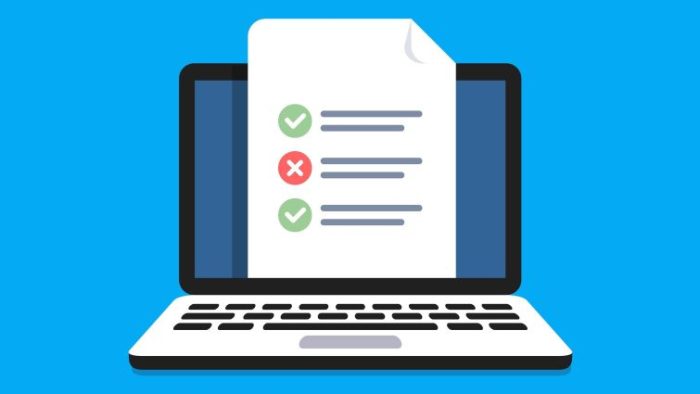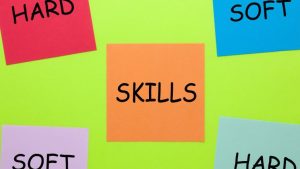Mastering the Art of Resume Writing: Dos and Don’ts for 2024
 Publié le 4 March 2024
Publié le 4 March 2024
Take your job search to the next level by mastering the art of resume writing with the dos and don’ts for 2024.
Professional resumes are a standard requirement for many job applications, so learning how to write a strong resume is extremely valuable for leveling up in your career.
In this article, we’ll discuss everything you need to know to master the art of resume writing. We’ll briefly discuss why resumes are important before we dive into some dos and don’ts of writing resumes that will help you get hired for in-demand jobs in 2024 and years to come.
Why are Resumes Important?
Resumes are a crucial part of most job applications. They’re also required for admission to some schools, some volunteer position applications, and some grant applications, as well.
Resumes are so important because they typically serve as your first impression with a hiring manager. They represent you like an elevator pitch, giving you a small window of opportunity to capture the recipient’s attention and inspire them to learn more about you.
How your professional resume is written is even more critical than ever in this age of AI.
Some businesses use AI and similar technologies to review and filter resumes, meaning your resume may not be processed with leeway or grace. In these scenarios, a simple mistake could block your resume from making it to the round of reviews carried out by humans.
6 Dos of Resume Writing
As you write your resume, here are some of the top things to keep in mind.
1. Know Your Audience
Always write your resume with a specific recipient (read: potential employer) in mind. Someone looking to hire for an office management position is looking for different things than someone hiring for a bartending position.
That’s why keeping the information on your resume relevant to the position you’re applying for is essential. Be sure to include specific skills, keywords and experience mentioned in the job description.
For example, if you’re applying for a role to manage an office, your mixology or serving experience is irrelevant, unless you are using them to demonstrate soft skills on your resume. However, if you’re applying for a bartending position, these experiences are really crucial.
2. Keep it Concise
You only have a brief period to capture a hiring manager’s attention with your resume, so keep things concise. In addition to including relevant professional experiences and skills, ensure you get to the point with all the descriptions for the elements you’re including. Do not waste space providing in-depth explanations for specific professional experiences, as these should be saved for your cover letter.
3. Choose the Right Format
When it comes to writing a professional resume, there’s a pretty standard collection of information you should include.
The resume should feature your name, contact information, professional experience, and education, at the very least. If relevant, you might also include certifications, skills, volunteer work, and notable projects.
Typically, this information starts with work experiences and is followed by education-related points. You can browse standard resume formats in Google Docs, Microsoft Word, and other word processors to help you get started.
4. Use Editing Technology
The last thing you want to do is submit a resume to your dream job if it’s filled with spelling mistakes. You want it to be error-free.
An easy way to catch typos and other mistakes is to use editing technology. You can use the spell-check functionality built into your word processor for basic editing, but a dedicated tool, like Grammarly, will provide more critical edits.
On the same note, you can use AI writing tools or AI writing assistants to facilitate this process. Using AI tools to analyze job descriptions, individuals can identify critical skills, qualifications, and buzzwords crucial for the desired position.
This intelligent approach enables applicants to personalize their resumes effectively, highlighting their suitability for the role and increasing their chances of securing an interview.
5. Have Someone Review Your Resume
In addition to using a digital editor, it’s a good idea to ask someone you trust to review your resume. Another set of eyes will help you catch any additional mistakes and ensure it reads well.
Suppose you have access to a mentor or someone who works in a position equivalent to or higher than the individual hiring you. In that case, they can provide valuable insight into what hiring managers look for in a professional resume.
6. Be Honest
Sometimes, people feel the need to exaggerate the truth on their resumes to impress hiring managers. However, this isn’t a smart move, as it’s best to be honest about your experiences and abilities.
Points in your resume are likely discussion topics during the job interview process. They may also be covered when your references are checked. If you are caught lying, you’ll likely take yourself out of the running for the position.
5 Don’ts of Resume Writing
Now that you know some things to do when mastering the art of resume writing, let’s explore some things to avoid when writing a resume.
1. Make it Wordy
We talked about the value of keeping it concise when writing resumes. Where people go wrong is by making their resumes too wordy. They add fluff to sound more intelligent or simply fill up space.
However, with the short amount of attention hiring managers give each resume, keep it short, sweet, and to the point. Ideally, your resume should be one page or two pages at maximum.
2. Include a Picture
Many people feel inclined to include a headshot on their resume. However, there are several reasons why you shouldn’t do this.
For starters, a picture takes up space. When working with limited real estate to convey your professional experience and critical achievements, a photo takes up an unnecessary amount of space.
Including a headshot may open you up to discrimination or bias, whether it’s intentional or not, so it’s best to leave it out.
3. Combine Your Resume and Cover Letter
Cover letters are still an essential part of many job applications. However, the cover letter doesn’t belong in the resume itself. Your cover letter can live in the body of the email you send your resume to a prospective employer. Or you can upload it directly in the appropriate job application field.
Although the resume and cover letter are different, the same concepts of polishing the language in the cover letter are applicable to ensure it’s error-free.
4. Send an Inaccessible File
You could write the best resume ever, but if potential employers can’t open the attachment, it’s all for nothing. Since different people work on different operating systems, it’s best to download and send your resume as a PDF to make it as easy to access as possible.
Try to avoid sending Word Docs, Pages, a link to Google Docs, or Canva. These can present issues for the recipient and block them from quickly accessing your resume if the permissions aren’t configured correctly.
5. Confuse a Resume and a Portfolio
Visual representations of your past work are crucial for landing jobs in many creative industries. Graphic designers, game designers, architects, and other people who do visual work are better off placing these examples in an online portfolio.
For these careers, it’s wise to have a resume to describe your relevant work experience in addition to a portfolio to demonstrate your creative concepts.
Final Thoughts
Ensuring your resume is well-written with professional experience will set you up for success when applying to jobs, schools, and more. By following these dos and don’ts, you’ll be on track to master the art of resume writing in no time at all.
So, are you ready to write a strong resume and land your dream job?







